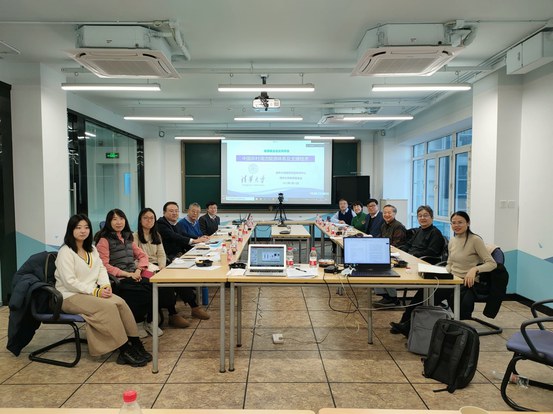Rural Clean Energy Project Recommended a Distributed Renewable System
As China’s carbon goals and rural revitalization strategy are advanced, clean heating and scattered coal elimination have become crucial points of the ongoing revolution of the rural energy system and the rural way of life. They are also the key in criteria pollutant and carbon reduction efforts. With the support of Energy Foundation China, Tsinghua University held an expert workshop to review their research on China’s rural clean energy system and supporting technologies on January 12, 2022.

Photo by Tsinghua University
The project researchers analyzed the current energy utilization status in China’s rural areas and identified emerging carbon emission and environmental pollution issues, including the slow progress in energy-efficient building envelopes, potential safety risks and fuel shortages after the switch from coal to gas or electricity, and high initial investment or operational costs. The researchers then came up with a comprehensive strategy with five objectives—pollution control, energy conservation, carbon reduction, comfort, and affordability—for switching coal to cleaner energy sources, proposed 15 evaluation indicators, and recommended critical technologies with a comparation of their economic costs. The technologies they examined included: electrification of energy use in buildings, “PEDF” building power system—a combined photovoltaics (PV), energy storage, high efficiency direct current power, and flexible load system—for distributed houses, heating with roof PV panels, centralized biomass heating, biomass pyrolysis and gasification, and biomass polygeneration.
According to the findings of the project, thanks to the clean heating campaign in Northern China and the fast urbanization, energy use and carbon emissions of buildings in China’s rural areas both peaked in 2016 and had dropped since then. In 2020, rural residences consumed 300 million tons of standard coal equivalent (tce) and emitted 550 million tons of CO2. Under a more favorable scenario, scattered coal use in rural areas could be eliminated by 2030; rural buildings could achieve near-zero emissions by 2040 while municipal electricity, direct combustion of biomass, liquefied petroleum gas, fuel gas, and other energy sources would be phased out; and by 2060, on top of meeting the energy demand of rural buildings, additional rooftop PV power generation would reach 1.2 trillion kWh, additional biomass energy would amount to 790 million tce, potentially cutting over 1.5 billion tons of carbon emissions each year.
Yi JIANG, member of the Chinese Academy of Engineering, expressed his appreciation of the research and said that rural areas in China should develop a new energy system that integrates renewable energy production and consumption, shift from energy consumers to suppliers, and make breakthroughs in pollution and carbon reduction.
Xin LIU, Director of the Environmental Management Program of Energy Foundation China, said in his concluding remarks that, driven by China’s carbon neutrality vision and pollution reduction policies, establishing a distributed renewable energy system in villages would be a key content of the country’s campaign for eco-friendly rural areas and consistent with its development goal of a clean, low carbon, and sustainable energy system.




